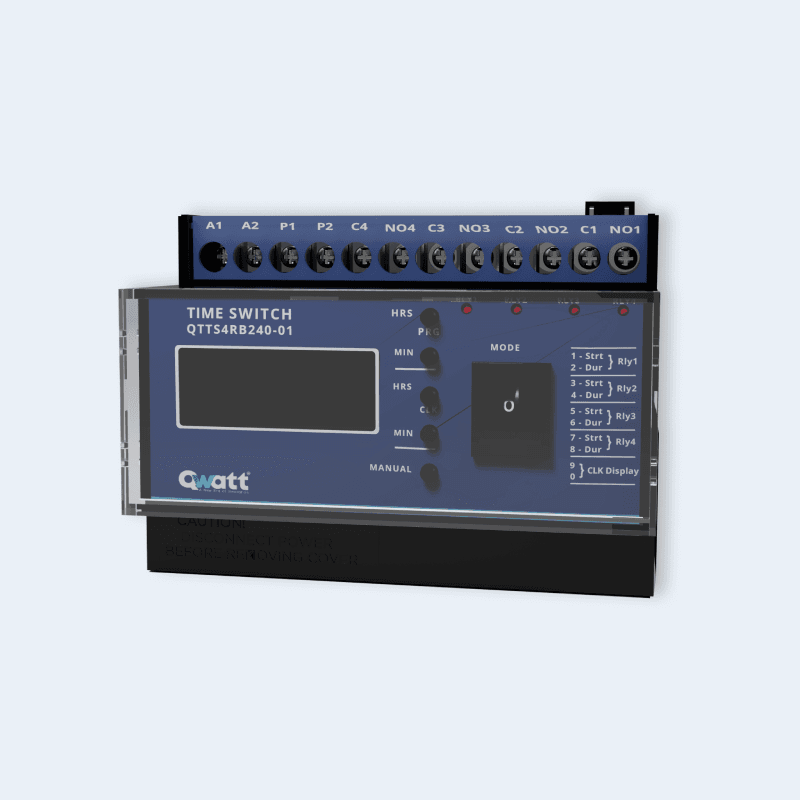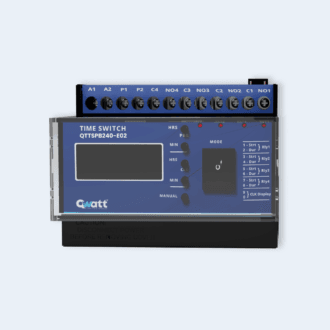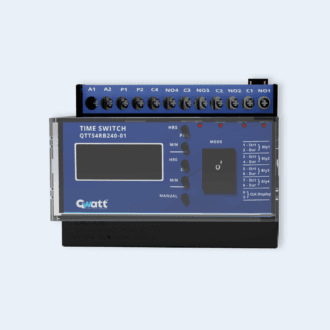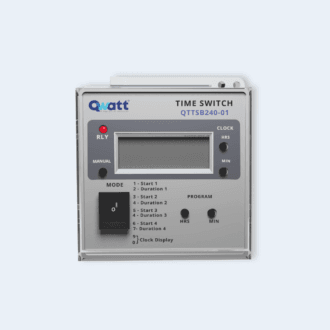- Your cart is empty Browse Shop
Embrace the Future with Qwatt
IoT Enabled Digital Time Switches

Revolutionizing Automation with Efficiency & Quality
Introducing Qwatt’s extensive range of time switches, which redefine automation with unparalleled quality. Setting a new standard in technical specifications and build quality, our time switches are renowned for their reliability, backed by an industry-leading s-year warranty—a first in India.
Key Features:
- Inbuilt Surge Protection – Ensures device longevity and smooth operation.
- UL-Grade Fire Retardant Build – Prioritizing safety and durability.
- IP66 Enclosure (Optional) – Weather-resistant for diverse applications.
- Multi-Relay Connectivity – Enabling flexible and advanced automation setups.
- Protection from Voltage Fluctuations – Safeguarding connected devices.
- Centralized Fault Analysis – Streamlining maintenance and troubleshooting.
- Energy Metering & Monitoring – Helping businesses track and optimize power usage.
- High Load Capacity Relays – Reliable performance for heavy electrical applications.
Significant Features
3.5 Year Warranty
Protection From Surge Failure
Multiple Output & Multi Programable.
Ul Grade Plastic Fire Retardant.
Multi Relay Connectivity Option
High Load Capacity Relays
IP 66 Enclosure on Demand
Protection from Low-High Voltage Fluctuation
Increased Assets Lifetime.
10T based Centralised Monitoring
Centralised Fault Analysis
Centralised Energy Metering
Cart (0 items)




